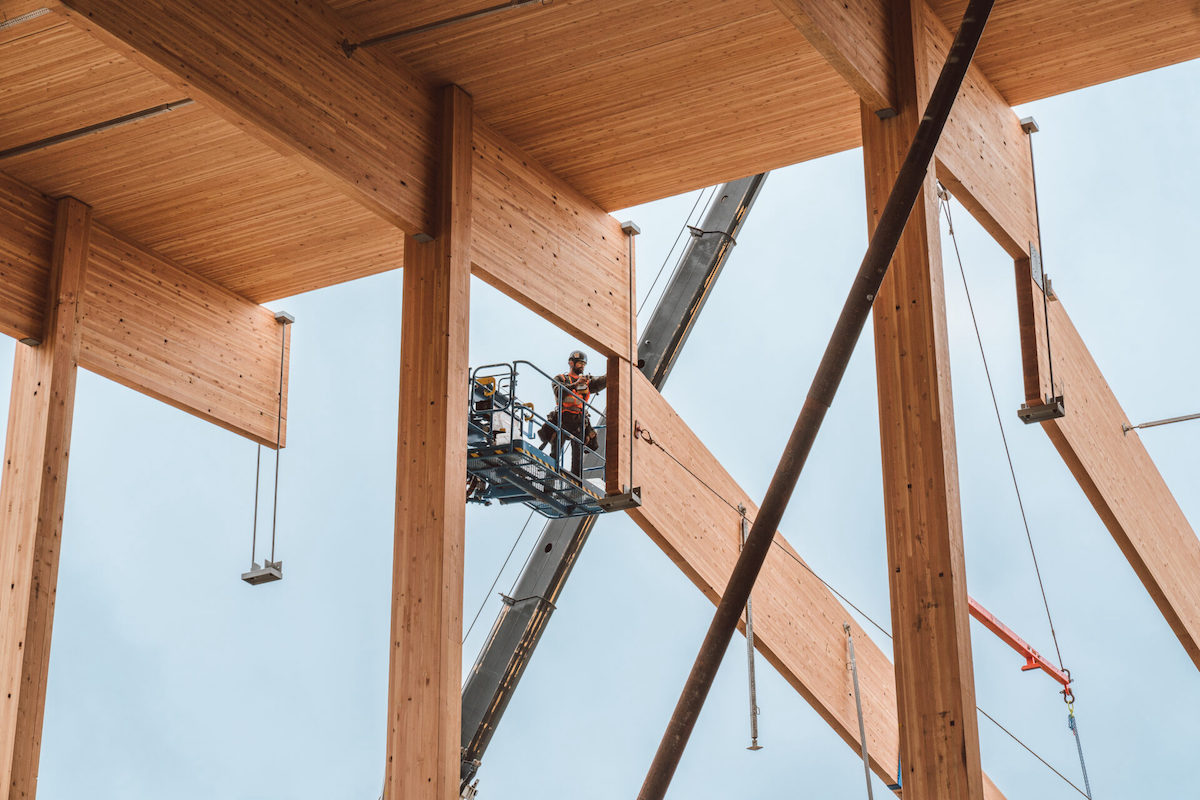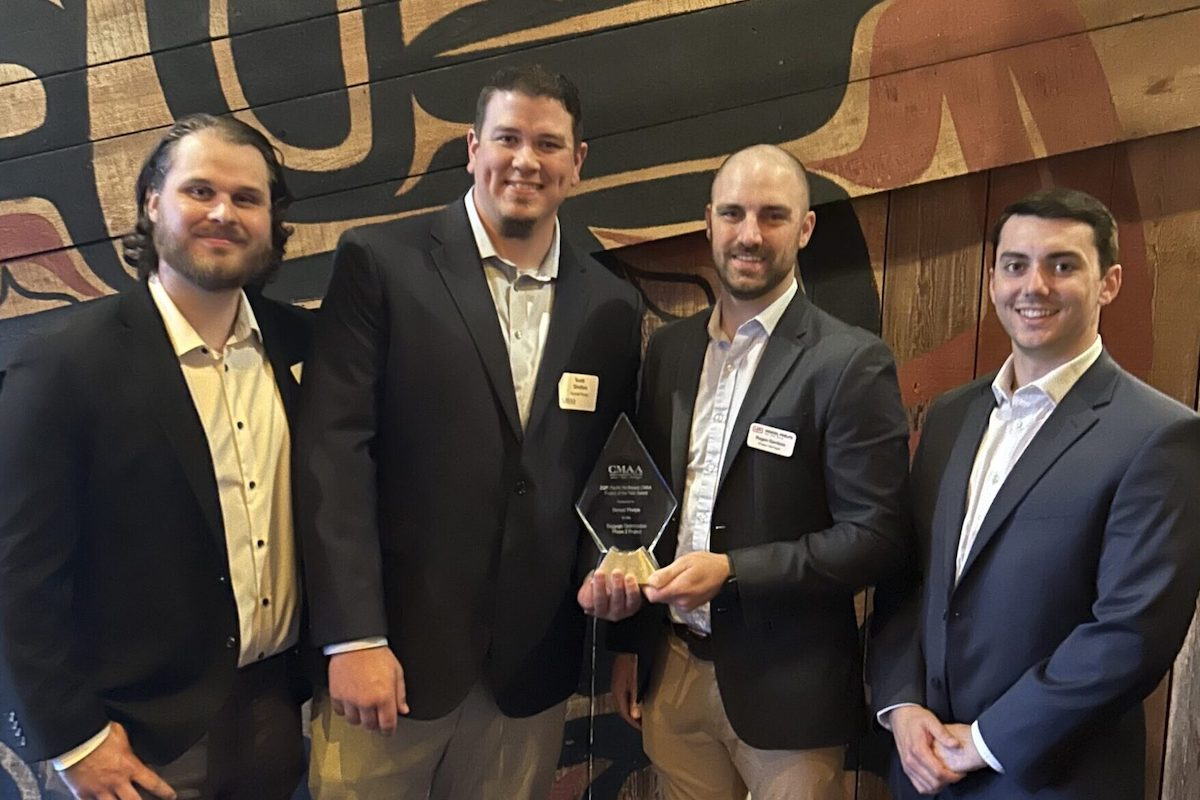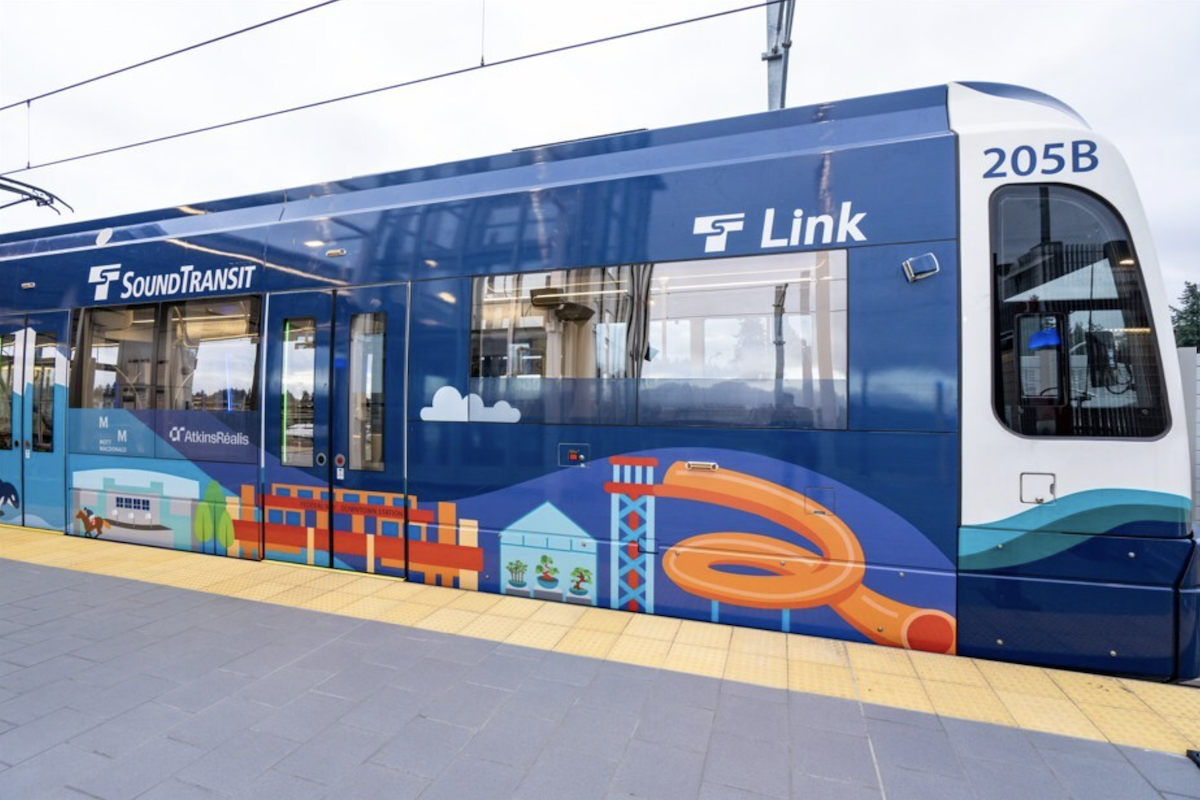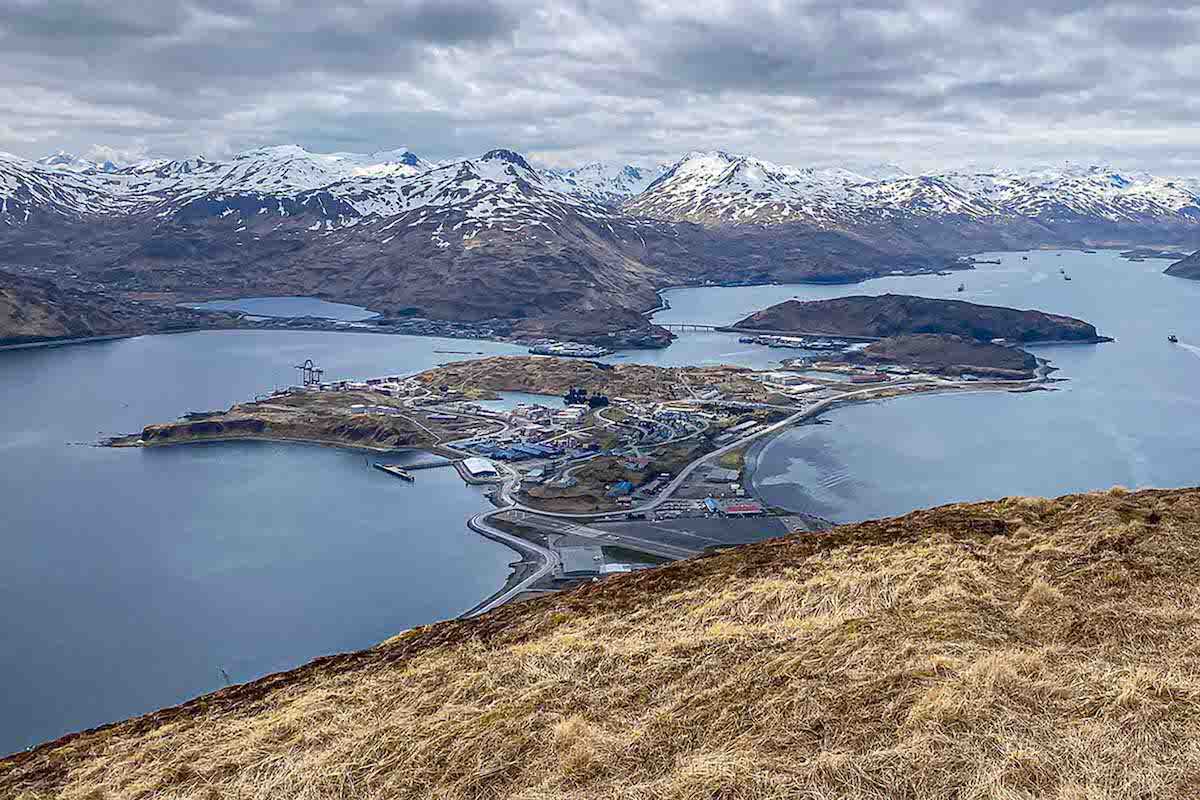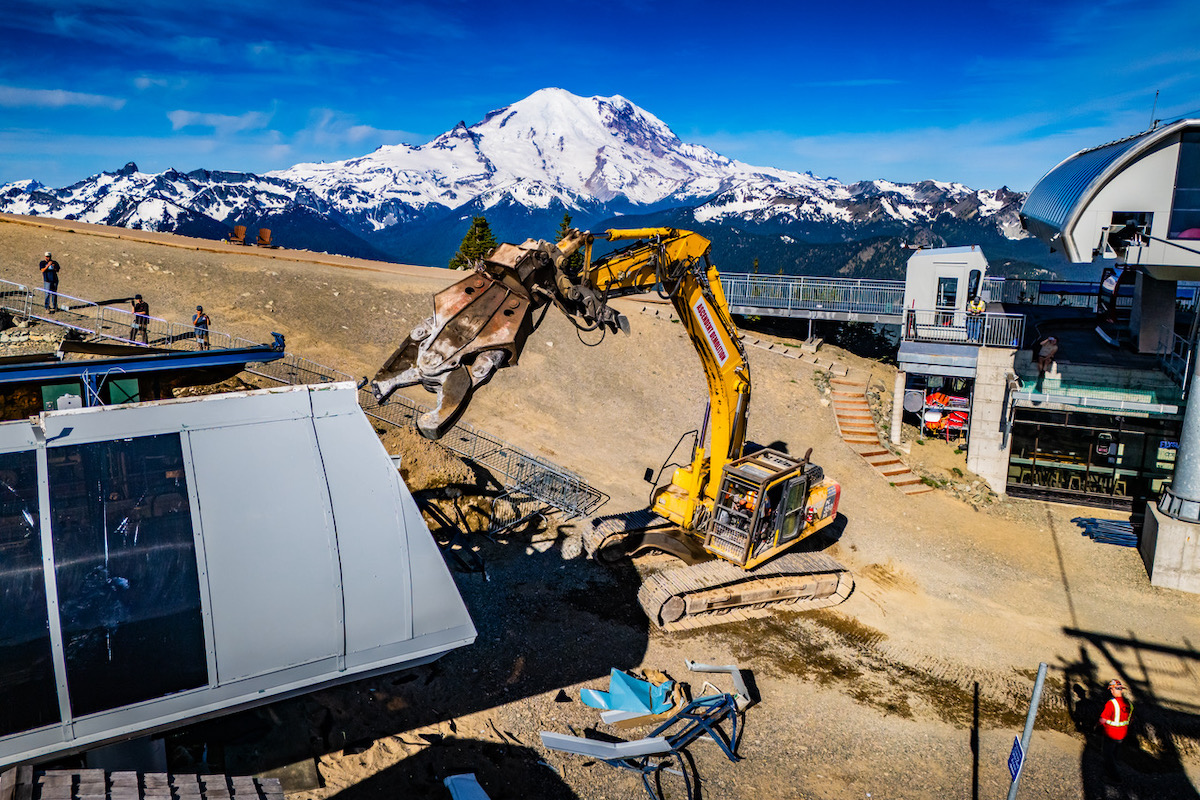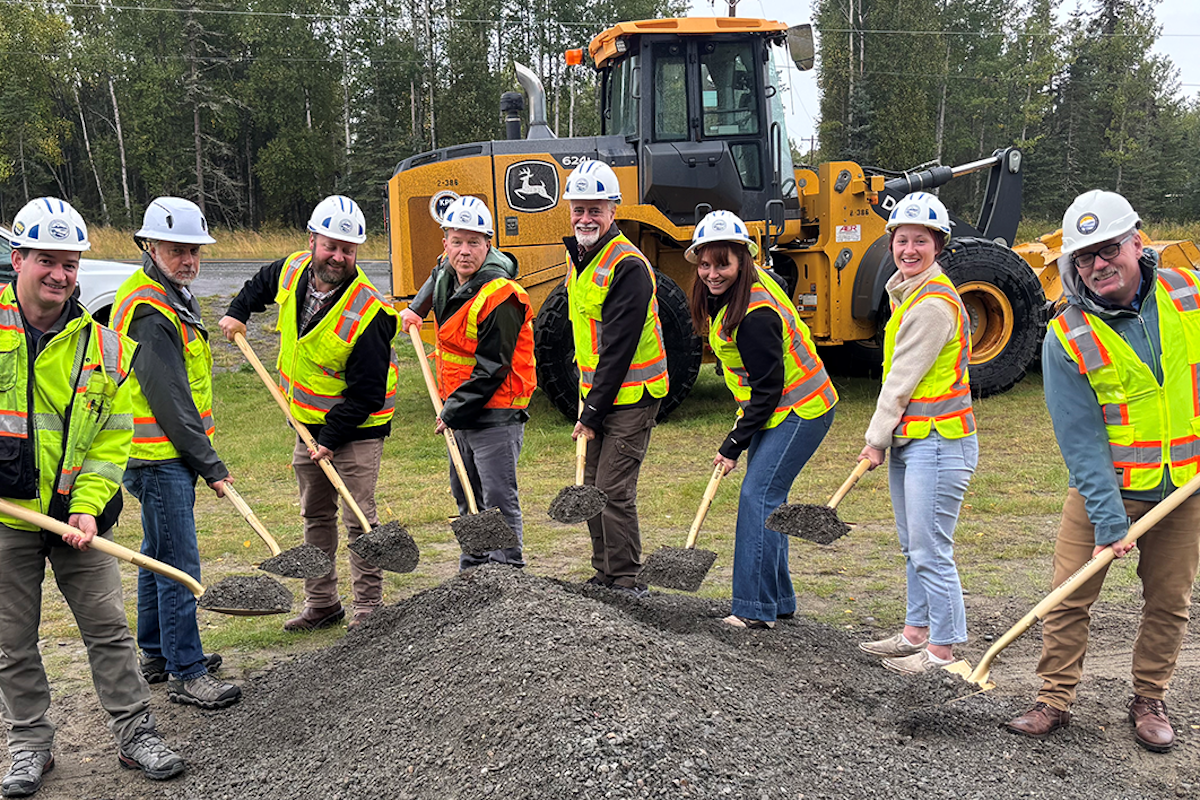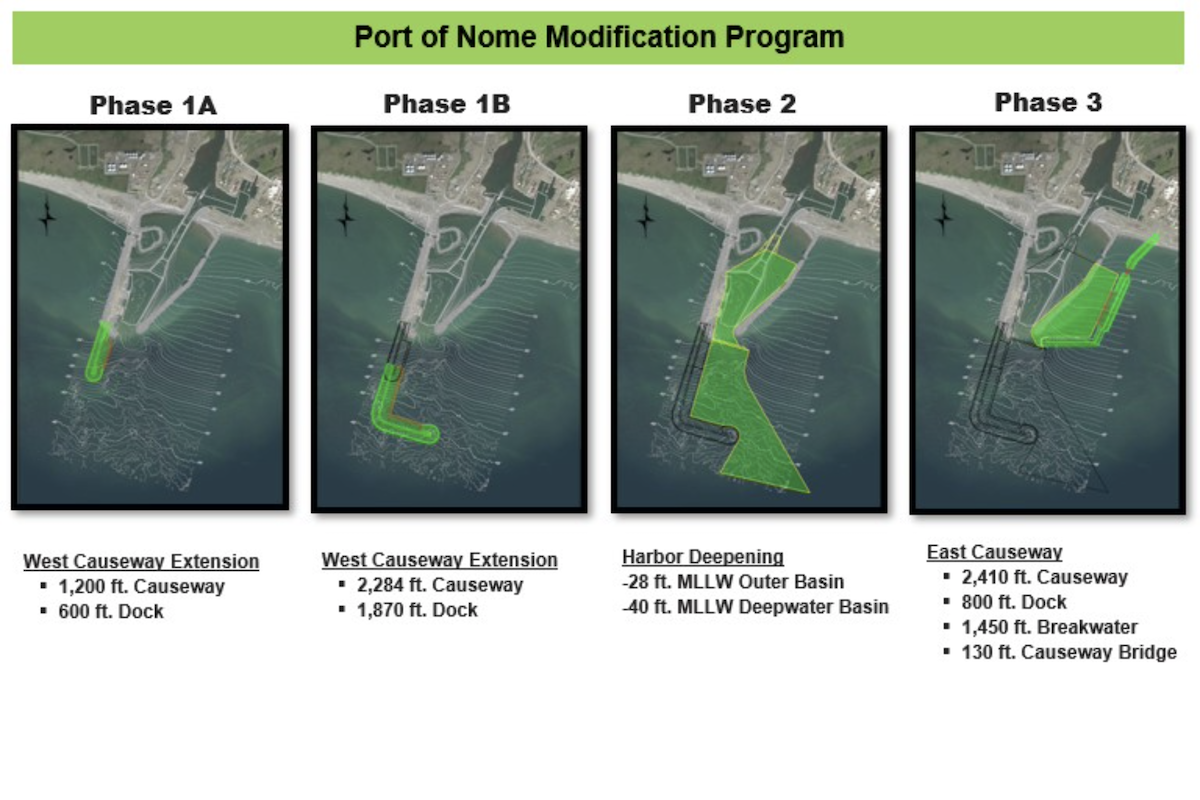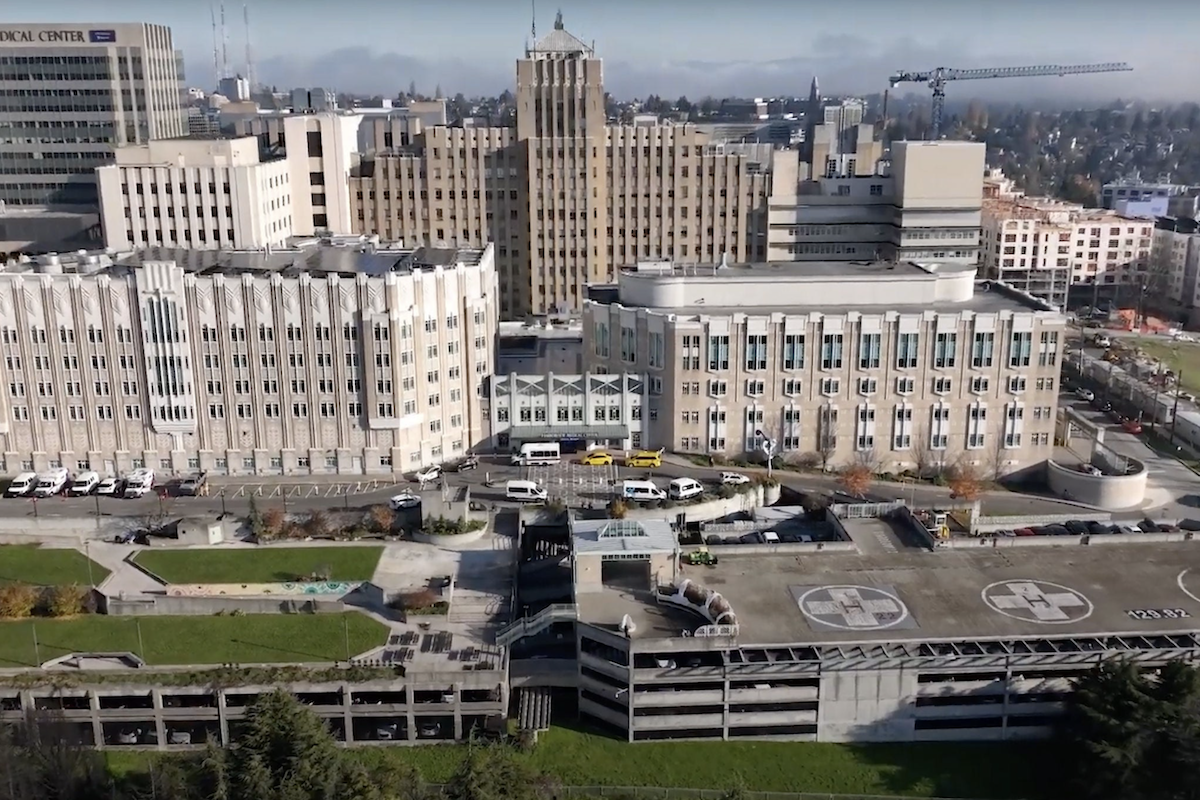PORTLAND, OR — Skanska, a global construction and development firm, and Hoffman Construction Company, the largest private company based in Oregon and southwest Washington, announce they have completed phase one of the Portland International Airport Terminal Core Redevelopment Project (TCORE). The milestone marks a significant step in a series of projects known as PDX Next, an effort aimed at enhancing the infrastructure and capacity of one of the busiest airports in the Pacific Northwest. The primary TCORE Project doubles the size of the ticket lobby and consists of a renovated passenger entry terminal, a new 9-acre mass timber roof over the entire terminal, and new space for local restaurants and shops among other modern features to accommodate growing passenger demand.
“Completing phase one of the Portland International Airport project demonstrates our team’s ingenuity, expertise, and commitment to delivering high-quality construction projects,” said Joe Schneider, Senior Vice President-Account Manager at Skanska. “We are proud of the modernization efforts that will support PDX’s growth and enhance the travel experience for millions of passengers. We hope visitors will be in awe of the mass timber roof, which was a true engineering feat, and stands to be a main attraction in the Pacific Northwest.”
“Hoffman has completed more than a dozen projects at the Portland International Airport over the last 26 years, but the Terminal Core project is a once-in-a-lifetime accomplishment that required outside-the-box innovation and sheer determination,” said Dave Garske, Hoffman Construction Vice President. “Our teams’ ability to bring a cutting-edge mass timber design and construct it in an operating airport is something we’re very proud of, and we hope we’ve helped set PDX up to be the best airport in the U.S. for many years to come.”
Phase one of the project includes seismic resiliency upgrades and replacement of aging systems and infrastructure. It consists of new airline check-in areas, a new public space with stadium seating and a mezzanine restaurant, 12 new permanent local shops and restaurants, an improved security process, new art exhibits, and new flooring — including the return of PDX’s famous carpet. Inspired by the landscapes of the Pacific Northwest, the new terminal implements biophilic elements. It brings in nature to create a more pleasing experience for travelers through the use of increased natural daylight and green spaces, featuring live trees and foliage throughout the terminal.
“This project is proof of the big things that tradespeople and businesses across our region can achieve together,” said Vince Granato, Chief Projects Officer at the Port of Portland. “The Hoffman Skanska team solved incredibly technical puzzles and did the highest quality work, all while prioritizing safety for the hundreds of people on the job site each day.”

| Your local Volvo Construction Equipment dealer |
|---|
| PacWest Machinery |
Phase two will begin soon to further expand airport facilities including permanent exit lanes with more escalators down to baggage claim, seating areas to wait for arriving travelers, and additional retail space for local shops and restaurants. Skanska and Hoffman remain committed to working closely with PDX officials and stakeholders throughout all phases of this project. Completion of phase two is expected in 2026.
Key achievements during phase one include:
- Moving the roof structure into place: Hoffman Skanska Joint Venture prefabricated the massive 9-acre roof on a prefabrication yard west of the terminal, creating 14 rectangular pieces that were then placed together to create the 9-acre roof structure. Those 14 rectangular pieces were then moved over several nights, using hydraulic jacks to lift and move each rectangular piece to its target altitude of 55 feet above ground. A self-propelled modular transport then drove each rectangular piece to its destination. Once there, the construction team bolted the rectangular pieces to the top of 23 giant Y columns to hold them up. It took approximately three days to move each rectangular piece.
- Upholding sustainability: The project will pursue LEED Gold certification. It incorporates a ground-sourcing heating/cooling system designed to reduce the airport’s fossil fuel use by 95 percent, using an existing aquifer for heating and cooling energy. Sustainable design elements such as energy-efficient lighting, water-saving fixtures, and improved waste management practices will further reduce the airport’s environmental impact.
- Prioritizing seismic resilience: Seismic resilience was a priority in the TCORE project. The roof and curtain wall system are designed to move up to 24 inches in any direction, minimizing significant structure damage in a seismic event. The movement is made possible by seismic base isolation bearings that support the roof structure and isolate it. The curtain wall is attached with hinged connections that permit it to slide and pivot relative to the structure below.














